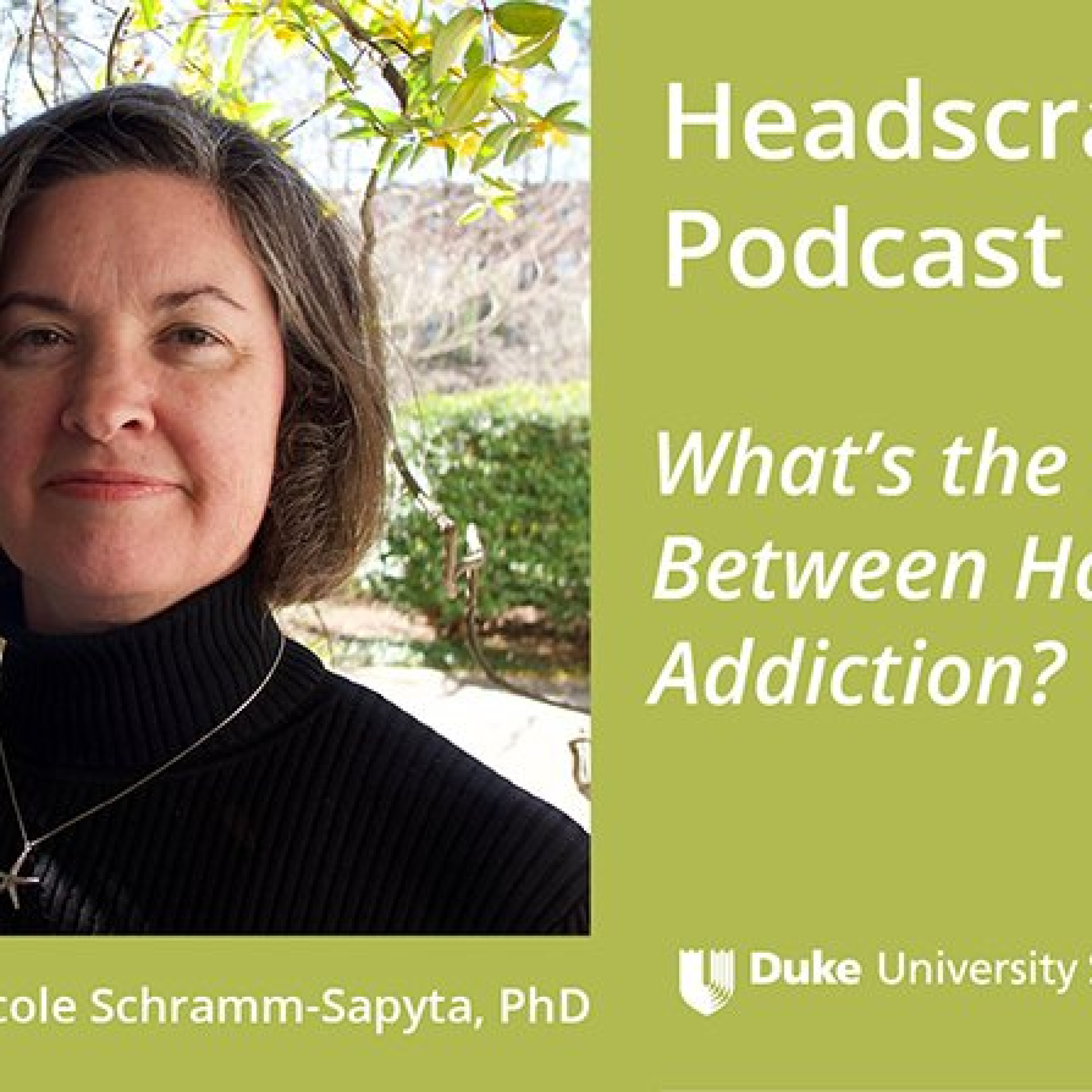Developing a Flu Vaccine: The Strain of So Many Strains
Update: 2019-10-24
Description
Vaccine development expert Dr. Tony Moody explains why creating a universal flu vaccine—which protects against all strains of the virus—is so difficult, and how researchers at Duke are addressing this challenge. Dr. Moody is an associate professor in the Department of Pediatrics, Division of Infectious Diseases, and the Department of Immunology at Duke University School of Medicine. He is director of the Laboratory of B cell Immunotechnology at the Duke Human Vaccine Institute.
Transcript:
Music: HipJazz by Bensound
Lindsay Key
Welcome to Head Scratchers, a mini-cast from the Duke University School of Medicine. We ask Duke experts to help us understand the questions in science that have us scratching our heads.
Today we're speaking with Dr. Tony Moody, an expert in vaccine development.
Dr. Moody, I get a flu vaccine every year, but I hear it only protects me from certain strains of the flu. Why is that? Why isn't there a vaccine that can protect me from all of the strains?
Dr. Moody
To make a flu vaccine, it really means you're trying to predict the future. The flu vaccine that's currently given has three or four strains. We're having to make a guess as to whether or not those strains are going to be the ones that are circulating at the time when winter comes around and people start to get sick. Given that it takes six months or more to make the vaccine,
t’s actually being done constantly, because there's a vaccine made for the Northern Hemisphere, and for the Southern Hemisphere. We have to make a new vaccine essentially every six months because of the way flu changes.
Over time, it mutates slowly. And so you actually wind up with viruses that are resistant to the immune response that already is present in the population.
So one of the things that people would like to be able to do is to make what's called a universal flu vaccine, that is, a single vaccination that would protect you against all of the various strains of influenza. The problem is that influenza is quite variable. And to make a universal vaccine, you either have to have a vaccine that will attack each strain, or something that will attack all the strains at the same time. The diversity of the virus makes it really hard to get one thing that will cover all of the different strains. Even if we get something today, it may very well turn out that tomorrow it's no longer effective, because the virus has learned how to get around it.
And then there's also the problem of not knowing which new strains might jump into the population. And we want to try to protect against those as well. So some of what we're trying to do is to break the problem down. I mean, the truth is if we could make a vaccine that actually cuts down on symptoms, or cuts down on people shedding the virus and giving it to other people, that's still a big win for influenza vaccines, because it would cut down on the number of people who get sick.
So yes, the perfect goal would be a universal vaccine that would prevent all disease in all people. But even if we can't get that, we can do better hopefully than, than what we've got now. And we could still have an impact on public health.
Lindsay Key
Thanks for listening. This podcast was produced by the Duke University School of Medicine. Music by Ben sound.
Visit us online at headscratcherspodcast.duke.edu
Medical Disclaimer & Terms of use at https://bit.ly/2LrjWdh
Transcript:
Music: HipJazz by Bensound
Lindsay Key
Welcome to Head Scratchers, a mini-cast from the Duke University School of Medicine. We ask Duke experts to help us understand the questions in science that have us scratching our heads.
Today we're speaking with Dr. Tony Moody, an expert in vaccine development.
Dr. Moody, I get a flu vaccine every year, but I hear it only protects me from certain strains of the flu. Why is that? Why isn't there a vaccine that can protect me from all of the strains?
Dr. Moody
To make a flu vaccine, it really means you're trying to predict the future. The flu vaccine that's currently given has three or four strains. We're having to make a guess as to whether or not those strains are going to be the ones that are circulating at the time when winter comes around and people start to get sick. Given that it takes six months or more to make the vaccine,
t’s actually being done constantly, because there's a vaccine made for the Northern Hemisphere, and for the Southern Hemisphere. We have to make a new vaccine essentially every six months because of the way flu changes.
Over time, it mutates slowly. And so you actually wind up with viruses that are resistant to the immune response that already is present in the population.
So one of the things that people would like to be able to do is to make what's called a universal flu vaccine, that is, a single vaccination that would protect you against all of the various strains of influenza. The problem is that influenza is quite variable. And to make a universal vaccine, you either have to have a vaccine that will attack each strain, or something that will attack all the strains at the same time. The diversity of the virus makes it really hard to get one thing that will cover all of the different strains. Even if we get something today, it may very well turn out that tomorrow it's no longer effective, because the virus has learned how to get around it.
And then there's also the problem of not knowing which new strains might jump into the population. And we want to try to protect against those as well. So some of what we're trying to do is to break the problem down. I mean, the truth is if we could make a vaccine that actually cuts down on symptoms, or cuts down on people shedding the virus and giving it to other people, that's still a big win for influenza vaccines, because it would cut down on the number of people who get sick.
So yes, the perfect goal would be a universal vaccine that would prevent all disease in all people. But even if we can't get that, we can do better hopefully than, than what we've got now. And we could still have an impact on public health.
Lindsay Key
Thanks for listening. This podcast was produced by the Duke University School of Medicine. Music by Ben sound.
Visit us online at headscratcherspodcast.duke.edu
Medical Disclaimer & Terms of use at https://bit.ly/2LrjWdh
Comments
In Channel














